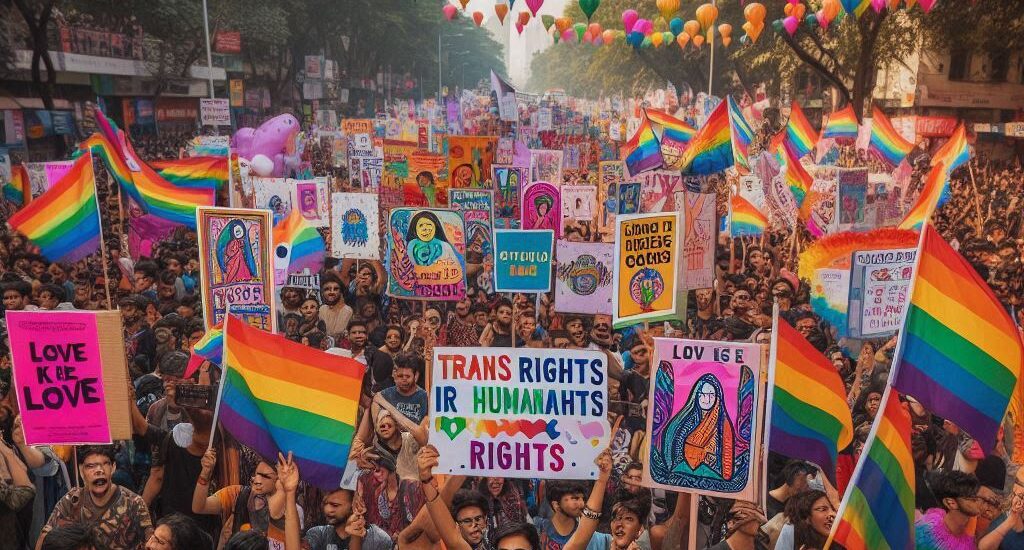



The LGBTQIA+ community represents a diverse group of individuals who identify as Lesbian, Gay, Bisexual, Transgender, Queer or Questioning, Intersex, Asexual, and other non-heteronormative sexual orientations and gender identities. The “+” in LGBTQIA+ serves as an inclusive symbol, acknowledging the spectrum of identities that exist beyond these categories. Understanding and supporting the rights of this community is crucial for fostering a more inclusive and just society. This article delves into the needs, repercussions, and societal perspectives surrounding LGBTQIA+ rights, with a focus on the Indian context, recent legal advancements, and the lived experiences of community members.
Legal recognition and protection are fundamental to ensuring equal rights under the law for LGBTQIA+ individuals. This includes protection against discrimination, recognition of same-sex marriages, and adoption rights. Healthcare access is another critical area, necessitating sensitive and comprehensive services such as mental health support, hormone therapy, and surgeries for transgender individuals. Social acceptance plays a significant role in combating stigma, discrimination, and violence, promoting a more inclusive society. Educational inclusion is also vital, integrating LGBTQIA+ issues into school curriculums to foster awareness and acceptance from a young age. Employment equality is essential for ensuring equal job opportunities and protection against workplace discrimination. Addressing these needs helps build a supportive environment where LGBTQIA+ individuals can thrive, contributing positively to society.
The “+” signifies the inclusion of other sexual orientations, gender identities, and expressions that may not be explicitly listed but are equally valid and important, however, this + sign does seem to accommodate an ever-evolving list of genders, which is not defined will continue to serve as an obstacle for courts to understand and/or decipher the general composition and specific wants and/or requests of the community at large.
The needs of the LGBTQIA+ community are multifaceted. Legal recognition and protection are fundamental, ensuring equal rights under the law, including protection against discrimination, recognition of same-sex marriages, and adoption rights. Healthcare access is another critical area, necessitating sensitive and comprehensive services such as mental health support, hormone therapy, and surgeries for transgender individuals. Social acceptance is crucial in combating stigma, discrimination, and violence, promoting a more inclusive society. Educational inclusion is also vital, integrating LGBTQIA+ issues into school curriculums to foster awareness and acceptance from a young age. Employment equality is essential for ensuring equal job opportunities and protection against workplace discrimination. Addressing these needs helps build a supportive environment where LGBTQIA+ individuals can thrive, contributing positively to society.
Ignoring LGBTQIA+ rights has serious repercussions. Discrimination and societal rejection can lead to mental health issues, including depression, anxiety, and higher suicide rates among LGBTQIA+ individuals. Social exclusion, due to lack of acceptance and legal protection, affects the overall well-being of LGBTQIA+ people. Economic disadvantages arise when discrimination in the workplace leads to unemployment or underemployment, impacting financial stability and economic growth. Therefore, protecting LGBTQIA+ rights is not just a matter of equality but also essential for the mental, social, and economic well-being of individuals and society as a whole.
Societal views on LGBTQIA+ rights are evolving, but prejudice and misinformation persist. Education and awareness campaigns are essential in changing perceptions and fostering a culture of inclusion and respect. Despite the progress, there remains a significant need for societal attitudes to shift towards greater acceptance and understanding of the LGBTQIA+ community.
In India, significant progress has been made in LGBTQIA+ rights, particularly with the decriminalization of homosexuality in 2018. This landmark decision by the Supreme Court has paved the way for further advancements and legal recognition for the community. However, ongoing efforts are required to ensure that these legal changes translate into real-world acceptance and equality for LGBTQIA+ individuals across the country.
Key legal milestones have marked the progress of LGBTQIA+ rights in India. In Naz Foundation v. Government of NCT of Delhi (2009), the Delhi High Court decriminalized consensual homosexual acts among adults. However, this victory was short-lived as the Supreme Court reversed the judgment in Suresh Kumar Koushal v. Naz Foundation (2013), reinstating Section 377 of the Indian Penal Code, which criminalized homosexual acts. The tide turned again with the landmark case of Navtej Singh Johar v. Union of India (2018), where the Supreme Court finally decriminalized consensual homosexual acts among adults by reading Section 377.
Recent cases and developments continue to shape the rights of the LGBTQIA+ community. The Transgender Persons (Protection of Rights) Act, 2019, aims to protect the rights of transgender individuals and ensure their welfare. Despite its intentions, the Act has faced criticism for not fully addressing the community’s needs. Legal battles for marriage equality are ongoing, with activists pushing for reforms to grant marital rights to LGBTQIA+ couples.
Members of the LGBTQIA+ community often face unique challenges, including family rejection, social stigma, and discrimination in various aspects of life. Personal stories highlight the resilience and strength of individuals who navigate these obstacles daily, advocating for their rights and striving for a more accepting society. These lived experiences underscore the importance of legal recognition, social acceptance, and comprehensive support systems in addressing the needs and challenges faced by the LGBTQIA+ community.
Understanding LGBTQIA+ rights and the broader spectrum of identities represented by the “+” is essential for creating an inclusive society. Legal recognition, social acceptance, and comprehensive support systems are vital to addressing the needs and challenges faced by the community. As India progresses towards greater equality, continued efforts in education, advocacy, and legal reforms are necessary to ensure that LGBTQIA+ individuals can live with dignity and respect.
LGBTQ+ Rights in India: The Supreme Court’s Verdict – Drishti IAS
Can you be more specific about the content of your article? After reading it, I still have some doubts. Hope you can help me.